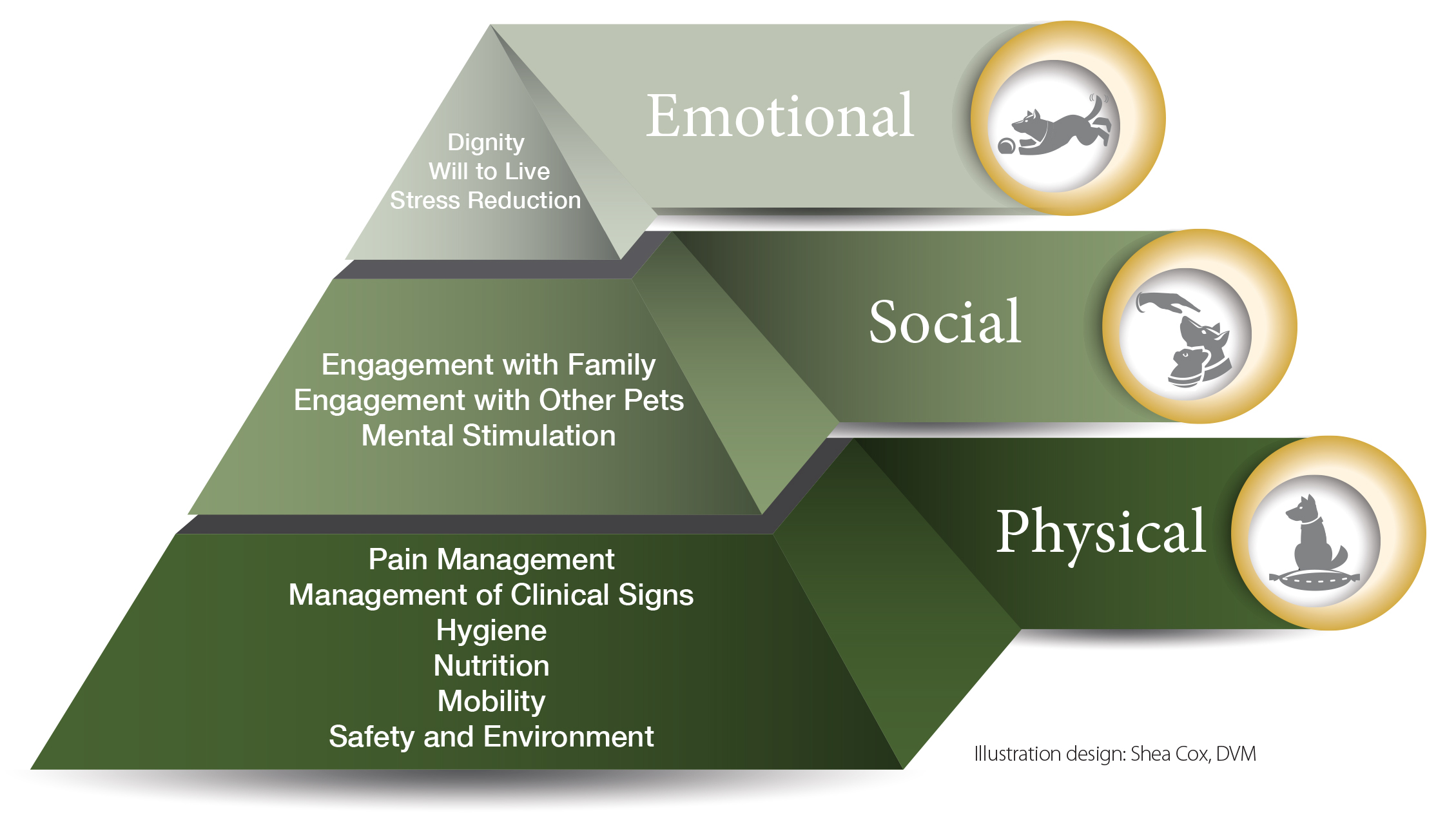Components of an integrated approach to EOL care
The animal hospice care pyramid
A patient’s passage from palliative to hospice care and ultimately to death is a progression that can range from hours to months to complete. As with human medicine, the physical, social, and emotional health of veterinary patients are strongly interrelated. It is difficult to achieve optimal quality of life when any one of these components is missing. The Animal Hospice Care Pyramid illustrates these complementary areas of patient care that should be considered during the EOL transition. Each level of the pyramid builds upon the others to achieve optimal end-of-life experiences. The base of the pyramid includes the animal’s physical well-being and represents the traditional clinical care services that veterinarians provide. However, successful management of the hospice patient must also consider the mid-level of the pyramid consisting of the social welfare of the pet, and the pyramid apex that focuses on the pet’s emotional well-being. When the healthcare team, working in collaboration with the pet owner, successfully addresses all three levels of the hospice care pyramid—physical, social, and emotional needs—the practice is best able to maximize comfort and minimize suffering. Those are, after all, the ultimate goals for every pet that has entered into its EOL stage. Animal hospice care can be segmented into a hierarchy of three components, each of which must be satisfactorily addressed to provide optimum end-of-life care.





